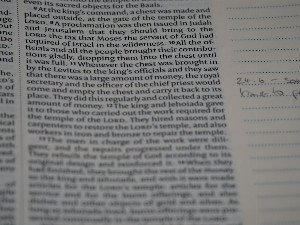Magdalena León Gómez
Yes, we camp: el paisaje lingüístico de la protesta, de Madrid a L’Aquila (Italia)
Introduction
Yes, we camp: el paisaje lingüístico de la protesta, de madrid a l’aquila (italia). Compara el paisaje lingüístico de protestas sociales clave: el 15M en Madrid y L'Aquila post-terremoto. Analiza prácticas y estrategias discursivas compartidas.
Abstract
En este artículo hablaremos del aparato lingüístico de dos protestas sociales y, concretamente, de sus paisajes lingüísticos. El primer foco de atención será el 15M, que ha sido estudiado desde numerosos puntos de vista. Nos interesa aquí el que pone de manifiesto el papel desempeñado por el PL de la protesta durante el desarrollo de este movimiento ciudadano. El segundo escenario es menos conocido por la comunidad científica. Se trata del PL que surge a raíz de las protestas de los ciudadanos de L’Aquila (Italia) en la fase inmediatamente sucesiva al momento de la máxima emergencia por el terremoto del 6 de abril del 2009. El objetivo principal es indagar en las prácticas discursivas asociadas a la protesta en lugares tan distintos como Madrid y L’Aquila. Pese a que los desencadentes de ambos movimientos y los paisajes lingüísticos que los ilustran podrían parecer a priori dispares, tendremos oportunidad de reflexionar sobre las semejanzas que subyacen tanto en el nacimiento y en el devenir de las protestas, como en los signos que componen sus respectivos paisajes lingüísticos. Los movimientos de protesta como los que nos ocupan tienen en común un rasgo distintivo: la ocupación del espacio y su transformación gracias a la puesta en acto de una serie de prácticas discursivas. La semejanza en las estrategias lingüísticas operadas en Madrid y en L’Aquila nos ha llevado a intentar paragorar ambas realidades.
Review
This article proposes a compelling examination of the linguistic landscape (LL) within the context of social protest movements. By focusing on two seemingly disparate cases – the 15M movement in Madrid and the post-earthquake citizen protests in L'Aquila, Italy – the authors aim to uncover the "aparato lingüístico" and "prácticas discursivas" that characterize these forms of public dissent. The strength of this approach lies in its ambition to draw parallels between protests with distinct origins, yet united by the occupation and transformation of public space through linguistic means. The abstract successfully conveys the innovative nature of comparing a well-researched phenomenon like 15M with the less-explored L'Aquila case, promising fresh insights into the underlying similarities of protest LL. While the comparative framework is highly engaging, the abstract raises a few questions regarding the analytical depth and comparability of the chosen cases. Specifically, it would be beneficial for the full paper to clearly delineate the precise nature of the "prácticas discursivas" and "estrategias lingüísticas" being analyzed across both contexts. Given the differing triggers – a broad socio-political discontent in 15M versus an immediate post-disaster response in L'Aquila – a detailed methodological explanation of how these distinct "desencadenantes" are factored into the comparison of their respective linguistic landscapes is crucial. The abstract's mention of "paragorar ambas realidades" suggests a strong comparative effort, and the rigor with which the authors establish common analytical ground despite temporal and contextual differences will be key to the paper's success. Furthermore, clarifying the specific phase of the 15M protest being analyzed in relation to the "inmediatamente sucesiva" phase for L'Aquila would strengthen the argument for direct comparison. Overall, this article offers a potentially significant contribution to both linguistic landscape studies and the sociolinguistics of social movements. Its ambition to move beyond mere description to a comparative analysis of protest LL, seeking universalities in communicative strategies, is commendable. Should the full manuscript adequately address the methodological considerations regarding the comparability of its cases and provide robust evidence for the shared "estrategias lingüísticas," it could offer valuable theoretical and empirical insights. The study has the potential to enhance our understanding of how language and space interact during periods of social upheaval, making it a timely and relevant piece of research. I recommend proceeding with a full review of the manuscript, anticipating that the issues raised here will be thoroughly elaborated and supported.
Full Text
You need to be logged in to view the full text and Download file of this article - Yes, we camp: el paisaje lingüístico de la protesta, de Madrid a L’Aquila (Italia) from Artifara .
Login to View Full Text And DownloadComments
You need to be logged in to post a comment.
Top Blogs by Rating
Beyond the Blueprint: Why Your...
By Sciaria
Life's Grand Algorithm: Is Bio...
By Sciaria
Beyond the Stereotype: Unpacki...
By Sciaria
Favorite Blog
Beyond the Forbidden: When His...
By Sciaria
Mycorrhizal Networks: Unearthi...
By Sciaria
Unleash Your Inner Explorer: T...
By Sciaria
Related Research
As construções reflexivas na língua tenetehára-guajajára
Cultural-beliefs’ influence on students’ learning of livestock production in ogun state, nigeria
Formulation, quality characteristics, and research trends of fish balls: a bibliometric study
Share
Notice Board
- FLUVIAL DYNAMICS, EXTREME FLOODS AND GEOMORPHOLOGICAL HAZARD
- KAJIAN POLA SEBARAN AIR TANAH PADA DAERAH SEKITAR KAMPUS I POLITEKNIK AMAMAPARE TIMIKA DENGAN MENGGUNAKAN SOFTWARE SURFER 13
- MACHINE LEARNING MODEL USING EXTREME GRADIENT BOOSTING (XGBOOST) FEATURE IMPORTANCE AND LIGHT GRADIENT BOOSTING MACHINE (LIGHTGBM) TO IMPROVE ACCURATE PREDICTION OF BANKRUPTCY





